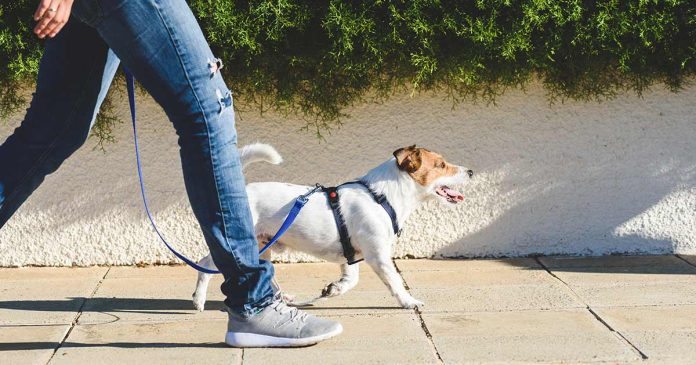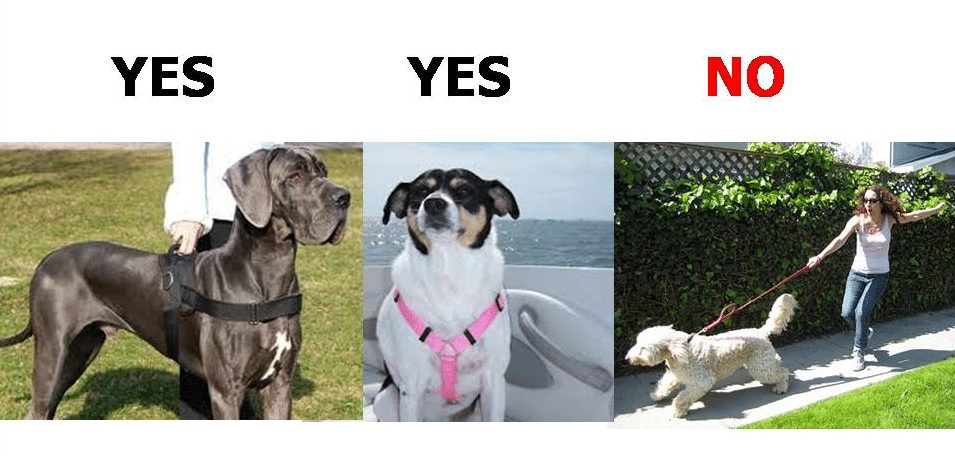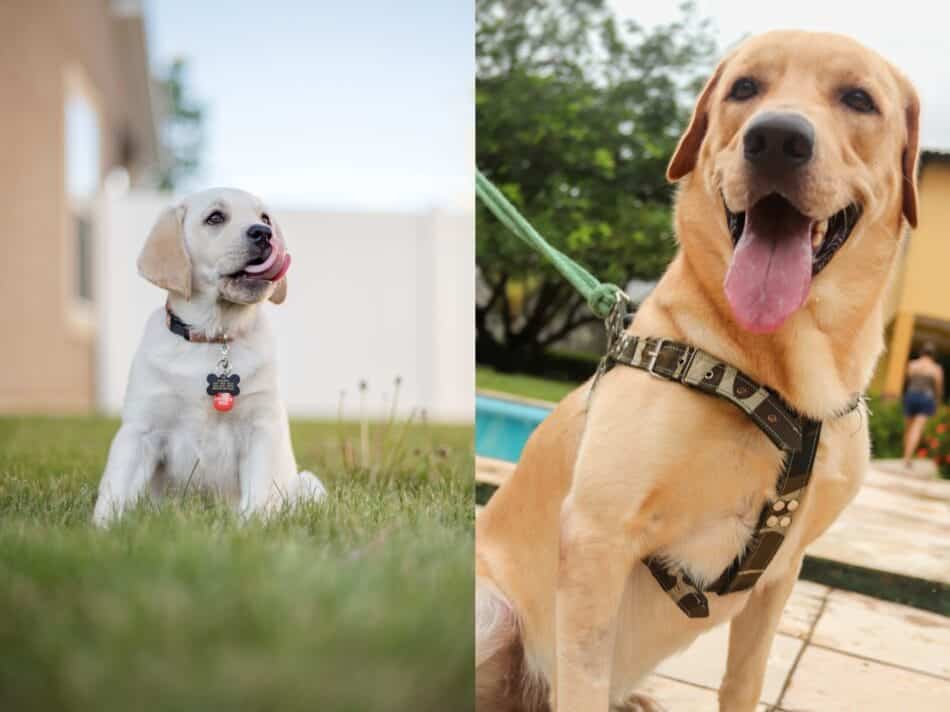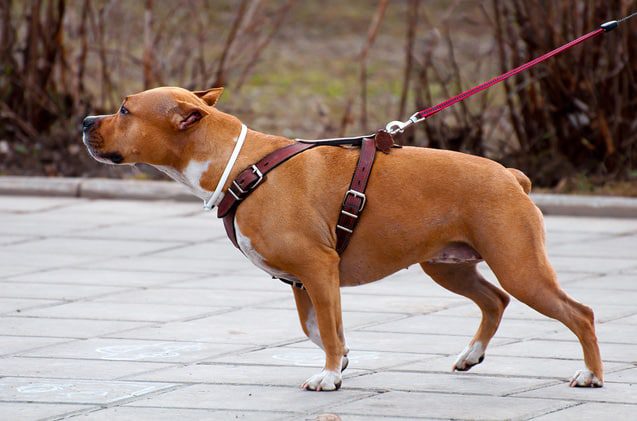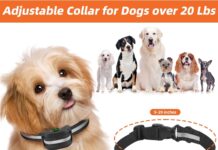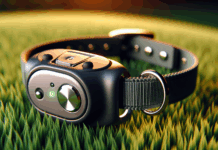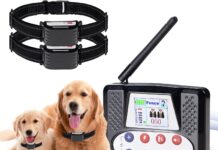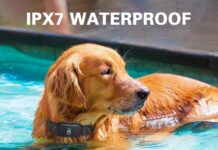Deciding between a harness and collar for your furry companion’s daily walks can be quite daunting. With so many options available, it’s easy to feel overwhelmed and uncertain about what would be best for your dog. In this article, we explore the pros and cons of using a harness or collar, helping you make an informed decision that ensures your dog’s comfort and safety during those enjoyable strolls.
This image is property of ocdogwalkingservice.files.wordpress.com.
Comfort and Safety
Comfort for the Dog
When choosing between a harness and a collar for walking your dog, it’s important to prioritize your furry friend’s comfort. Harnesses are often touted as a more comfortable option compared to collars. Why is that? Well, harnesses distribute the pressure of the leash across a larger area of the dog’s body, alleviating any strain on the neck. This is especially beneficial for dogs with sensitive necks or those prone to respiratory issues. By providing a snug and secure fit, harnesses help your dog feel more at ease during walks, allowing for a more pleasant experience for both of you.
Preventing Neck Injuries
One of the main concerns with using a collar for walking is the risk of neck injuries. Dogs can be prone to issues such as collapsed trachea or cervical spinal cord injuries, and using a collar that puts pressure solely on the neck can exacerbate these conditions. On the other hand, harnesses distribute the force of any pulling or tugging across the chest and shoulders, reducing strain on the neck and potentially preventing these types of injuries. By using a harness, you can have peace of mind knowing that you’re providing your dog with added protection and minimizing the risk of any neck-related injuries.
Restriction of Movement
Another advantage of using a harness is that it minimizes the restriction of movement for your dog. Collars can sometimes restrict a dog’s range of motion, making it uncomfortable for them to turn their head or even breathe properly. Harnesses, on the other hand, allow for more freedom of movement, as they don’t impede the neck or throat area. This can be particularly beneficial for dogs that enjoy sniffing around or exploring their surroundings during walks. A harness provides that extra flexibility, enabling your furry companion to move naturally without any hindrance.
Pressure Points
Harnesses are designed to avoid placing pressure on sensitive areas of a dog’s body. Collars, on the other hand, typically place pressure directly on the neck, which can cause discomfort or pain for certain dogs, especially those with existing injuries or medical conditions. By using a harness that distributes pressure across the chest and shoulders, you can avoid putting unnecessary strain on these sensitive points. This is particularly important for dogs with issues like arthritis or shoulder injuries, as a harness can help prevent exacerbation of these conditions. Plus, the even distribution of pressure can make your dog feel more at ease, leading to a more enjoyable walking experience.
Training and Control
Controlling Pulling Behavior
One of the primary reasons dog owners opt for a harness over a collar is to help control pulling behavior. For dogs that tend to pull on the leash, a harness provides more leverage and control. The design of a harness allows you to redirect your dog’s pulling force towards the shoulders or chest, making it easier to guide them in the desired direction. By using a no-pull harness that incorporates features like front-attachment points and anti-pull mechanisms, you can discourage pulling behavior and teach your dog to walk politely on a leash with consistent training.
Training Assistance
Harnesses can be a valuable tool in assisting with training efforts. The added control and leverage they provide can make it easier to teach your dog basic commands and leash manners. With a properly fitted harness, you can gently guide your dog’s movements and redirect their attention when necessary. This can be particularly useful for training sessions that require close attention and precision. Whether you’re working on heel walking, teaching your dog to ignore distractions, or practicing recall exercises, a harness can be an effective aid in reinforcing positive behaviors and enhancing your training sessions.
Effective Communication
A harness can also play a role in enhancing communication between you and your dog. With a collar, any leash tension is directly applied to the neck, which can inadvertently send mixed signals during walks. For example, if your dog lunges or pulls on a collar, they might associate the pressure with the excitement of moving forward, rather than a signal to stop or slow down. On the other hand, a properly fitted harness allows you to communicate more clearly with your dog. By utilizing the pressure points and leash attachments of a harness, you can provide consistent, gentle guidance and communicate your intentions clearly. This can promote better understanding between you and your four-legged friend during walks.
Escape Prevention
When it comes to dogs that are prone to escaping or slipping out of collars, harnesses can offer an added layer of security. Some dogs have a knack for wriggling out of collars, especially if they are particularly determined or have a smaller head in proportion to their neck. Harnesses, however, wrap around the body and often feature multiple points of attachment, making it much more challenging for your escape artist pup to free themselves. This added escape prevention can give you peace of mind and ensure that your dog stays safe and secure during walks.
Breeds and Sizes
Small and Toy Breeds
For smaller dog breeds, harnesses are generally the preferred choice when it comes to walking equipment. Small and toy breeds tend to have delicate necks and throats, making them more susceptible to injuries from collar-related pressure. Additionally, these pint-sized pups can be more prone to pulling on the leash due to their energetic nature. A harness can provide better control over their movements and disperse any pressure more evenly across their tiny bodies. Look for a lightweight and well-padded harness specifically designed for smaller breeds to ensure optimal comfort and fit.
Medium and Large Breeds
Harnesses are also suitable for medium and large breeds. While larger dogs may have stronger pulling tendencies, a properly fitted harness with sturdy construction can provide the necessary control. Opt for a harness that is designed to evenly distribute the force of pulling, such as one with front-attachment points. Additionally, consider the size and strength of your dog when selecting a harness, ensuring that it can comfortably accommodate their body shape and size. A well-fitted harness for medium and large breeds can help prevent strain on the neck and enhance both walking comfort and overall safety.
Brachycephalic Breeds
Brachycephalic breeds, such as Bulldogs, Pugs, and Boston Terriers, often have unique anatomical features that require special consideration when it comes to walking equipment. These breeds typically have shorter snouts, narrower nostrils, and respiratory challenges. Due to their compromised airways, collars can potentially exacerbate their breathing difficulties. As a result, harnesses are generally recommended for brachycephalic breeds to reduce any strain on their necks and minimize the risk of respiratory distress. When choosing a harness for a brachycephalic dog, opt for one with wide straps and a comfortable fit that avoids putting pressure on their sensitive respiratory system.
Puppies
For our adorable furry friends in their early stages of life, harnesses are an excellent choice. Puppies have delicate bodies and growing bones, making it crucial to prioritize their safety and comfort during walks. By using a harness, you can minimize the risk of neck injuries and promote healthy development. Additionally, puppies have a tendency to pull and explore their surroundings with curiosity. A harness provides better control and helps redirect their energetic impulses without compromising their well-being. Look for a harness specifically designed for puppies that offers a secure and adjustable fit, allowing your little one to grow into it comfortably.
Medical Conditions
Respiratory Issues
For dogs with respiratory issues, such as tracheal collapse or chronic bronchitis, harnesses are often the preferred option. Collars can put pressure directly on the throat, making it difficult for dogs with compromised airways to breathe comfortably. In contrast, harnesses distribute the force across the chest and shoulders, reducing any strain on the respiratory system. This makes walks more enjoyable for dogs with respiratory conditions, allowing them to breathe more freely and preventing potential exacerbations of their conditions. Always consult with your veterinarian regarding the best walking equipment for your dog’s specific respiratory needs.
Spinal or Neck Problems
Dogs with spinal or neck problems, such as intervertebral disc disease or cervical spondylomyelopathy (wobbler syndrome), require extra care and consideration when it comes to walking equipment. Collars can put strain on the neck and exacerbate these conditions, potentially leading to further injuries or discomfort. Harnesses provide a safer alternative, as they distribute any pulling force across the body, avoiding unnecessary pressure on the delicate spinal or neck area. By prioritizing your dog’s comfort and safety with a harness, you can help manage their condition and prevent any worsening of symptoms during walks.
Ocular Conditions
Certain ocular conditions, such as glaucoma or corneal ulcers, require special attention when choosing walking equipment for your dog. Collars can inadvertently put pressure on the neck, leading to increased intraocular pressure and potential harm to the eyes. In contrast, harnesses provide an alternative that avoids any direct impact on the neck or throat. By utilizing a harness, you can minimize the risk of exacerbating ocular conditions and prioritize your dog’s eye health. As always, consult with your veterinarian for specific guidance on walking equipment for dogs with ocular conditions.
Injuries or Surgeries
If your dog has recently undergone surgery or is recovering from an injury, a harness can be a valuable tool to aid in their rehabilitation and allow for a safe and comfortable walking experience. Collars can potentially put strain on healing incisions or vulnerable areas, hindering the recovery process. Harnesses, on the other hand, provide a secure and adjustable fit that avoids putting pressure on specific surgical sites or injuries. By using a harness, you can minimize any discomfort, promote proper healing, and support your dog’s recovery journey.
This image is property of i.insider.com.
Ease of Use
Putting on and Taking Off
Harnesses generally provide a more straightforward and hassle-free process when it comes to putting them on and taking them off your dog. With a collar, you often have to slide it over your dog’s head, which can be challenging for dogs who are anxious or wiggly. Harnesses, on the other hand, are designed to easily slip over your dog’s body. Many harnesses have adjustable straps and quick-release buckles that allow for quick and easy fitting. This ease of use can be particularly beneficial if your dog tends to get excited or impatient before walks, as it streamlines the process and ensures a smooth transition from the front door to the great outdoors.
Adjustability
Harnesses offer greater adjustability compared to collars, which can be crucial in achieving an optimal fit for your dog. Many harnesses feature adjustable straps around the neck, chest, and belly, allowing you to customize the fit according to your dog’s specific measurements. This adjustability not only ensures optimal comfort but also provides a secure and snug fit that minimizes the risk of escape or slipping. Whether you have a growing puppy or a dog with unique body proportions, a harness with adjustable straps can accommodate their changing needs and provide a secure, customized fit.
Fastening Mechanism
When it comes to fastening mechanisms, harnesses often offer more versatility compared to collars. While collars typically use traditional buckles or clasps, harnesses incorporate a variety of fastening options. Some harnesses use side-release buckles that snap together, simplifying the process of putting on and taking off. Others may feature step-in designs or Velcro closures that negate the need for adjustments and allow for quick and easy fastening. These alternative fastening mechanisms enhance convenience and make the overall walking experience smoother for both you and your furry companion.
Suitability for Different Activities
Harnesses are not limited to walking alone – they can be suitable for a variety of activities and outdoor adventures. Whether you enjoy hiking, jogging, or cycling with your dog, a harness can offer enhanced control and ensure your dog’s safety during these activities. Look for a harness specifically designed for active pursuits, featuring features such as reflective strips for increased visibility, a sturdy handle for additional grip, and optional attachment points for accessories like water bottles or waste bags. Choosing the right harness for your preferred activities can make these adventures even more enjoyable for both of you.
Escape and Security
Preventing Slippage
One of the advantages of using a harness is its ability to provide a more secure fit and prevent slippage compared to collars. Dogs with narrower heads or those who are particularly adept at wriggling their way out of collars may be more prone to slipping out. Harnesses wrap around the body, typically incorporating multiple adjustable straps, ensuring a snug and secure fit. This added security minimizes the chances of your dog escaping or slipping out of their walking equipment, giving you peace of mind and allowing you to focus on enjoying your time outside together.
Avoiding Collar Breakage
Collars can occasionally break or snap under excessive force, which can be a safety concern if your dog is prone to pulling or lunging. Harnesses, on the other hand, are designed to withstand greater strength and offer more durability, reducing the risk of breakage. By using a harness, you can avoid the potential dangers that may arise from collar breakage, such as your dog running loose or getting into potentially harmful situations. The added security and sturdiness of a well-constructed harness ensure that your dog remains safely and securely attached to the leash.
Resistance to Pulling
Harnesses, particularly those designed to discourage pulling, offer increased resistance to strong pulling behavior. Many no-pull harnesses feature front-attachment points that allow you to redirect your dog’s pulling force towards their chest, creating a gentle and effective means of discouraging pulling. These harnesses often incorporate various mechanisms, such as martingale loops or anti-pull clips, which discourage dogs from engaging in excessive pulling behavior without causing any harm or discomfort. By using a resistant harness, you can work on leash manners, improve control, and promote a more enjoyable walking experience for both you and your dog.
Securing Tags and Identification
Both harnesses and collars provide a means of attaching tags and identification to your dog. It is crucial to ensure that your dog is always wearing identification, including their name, your contact information, and proof of vaccinations, in case they were to ever become lost. While collars typically have a dedicated ring for attaching tags, most harnesses also feature an additional attachment point for this purpose. Some harnesses even offer built-in pockets or loops to securely hold your dog’s ID tags. Whichever option you choose, make sure that your dog is properly identified, greatly increasing the chances of a safe and speedy reunion if they were ever to go missing.
This image is property of blog.omlet.co.uk.
Behavioral Considerations
Fearful or Reactive Dogs
For dogs that are fearful or reactive, harnesses can be a valuable tool in helping manage their behavior during walks. Collars can inadvertently add unnecessary tension or stress when a dog is already feeling anxious, potentially exacerbating their fear or reactivity. Harnesses, however, distribute pressure across the chest and shoulders, providing a more secure and calming effect. Additionally, some harnesses have features such as built-in handles or calming wraps that allow you to have more control and provide comforting support to your dog when they need it most. By choosing a harness that offers comfort and security, you can help your fearful or reactive dog feel safer and more at ease during walks.
Aggressive or Dominant Dogs
For dogs with aggressive or dominant tendencies, using a harness can be an effective tool for managing their behavior and ensuring the safety of both you and others around you. Collars can sometimes provide dogs with a sense of control or leverage, exacerbating their aggressive or dominant behavior. Harnesses, on the other hand, allow for greater control and redirect the pulling force towards the chest, giving you more discretion in guiding your dog’s movements. By using a harness, you can maintain better control over your dog, discourage aggressive tendencies, and work towards improving their behavior with the help of professional training if needed.
Dogs with Prey Drive
For dogs with a strong prey drive, such as those who are highly interested in squirrels, rabbits, or birds, harnesses can offer better control and prevent any accidental escaping or slipping out. Collars can sometimes loosen or fail to maintain a secure fit when a dog suddenly lunges or pulls in pursuit of their prey. Harnesses, however, wrap around the body and offer multiple points of contact, significantly reducing the risk of escape. Additionally, some harnesses even feature additional handles or attachment points that allow for better control and quick redirection when your dog’s prey drive is triggered. By using a secure harness, you can enjoy walking your dog without worrying about their strong instinctual drives momentarily getting the best of them.
High Energy or Hyperactive Dogs
For dogs with high energy or hyperactive tendencies, harnesses can help provide better control and redirect their excess energy during walks. Collars can sometimes result in a dog feeling frustrated or restrained, leading to more pulling or erratic behavior. Harnesses, on the other hand, distribute pressure across the body, allowing for more controlled and comfortable movement. Look for a harness specifically designed for energetic dogs, incorporating features such as a sturdy handle for better grip or optional attachment points for accessories like treat pouches or interactive toys. By using a harness that caters to your dog’s energy levels, you can make walks more enjoyable while ensuring their safety and the safety of those around you.
Durability and Longevity
Materials and Construction
When it comes to durability and longevity, the choice between a harness and a collar will largely depend on the specific materials and construction of each item. Both harnesses and collars are available in a wide range of materials, including nylon, leather, or polyester. It’s important to choose a harness or collar that is made from high-quality materials, ensuring strength, durability, and resistance to wear and tear. Pay attention to reinforced stitching, sturdy hardware, and adjustable components that allow for a secure and reliable fit. By investing in a well-made harness or collar, you can expect it to withstand the test of time and provide long-lasting use.
Wear and Tear
Regular use and outdoor activities can subject dog walking equipment to wear and tear. Both harnesses and collars are exposed to elements such as dirt, moisture, and friction, which can gradually degrade their quality and condition. However, harnesses tend to offer a more comprehensive coverage of the dog’s body, minimizing direct contact with abrasive surfaces and potential tearing. Look for harnesses with reinforced seams and strong straps that can withstand rigorous activities. Additionally, consider options with removable and washable components, allowing for easy maintenance and keeping your dog’s walking equipment in top condition for longer.
Weather Resistance
Weather resistance is an important factor to consider when choosing between a harness and a collar. Dogs need to go for walks regardless of the weather conditions, and their equipment should be able to withstand rain, snow, or heat. Collars, particularly those made of leather, can be susceptible to water damage or stretching when exposed to moisture. In contrast, many harnesses are designed to be weather-resistant, commonly made from materials like nylon or polyester that can withstand moisture and exposure to the elements. Look for harnesses that are quick-drying and resistant to mold or mildew, ensuring optimal performance regardless of the changing weather conditions.
Replacing and Upgrading
Over time, wear and tear may necessitate the replacement of your dog’s walking equipment. While both harnesses and collars can require periodic replacement, there are a few factors that can influence the frequency of replacement. For instance, if your dog is prone to chewing or rough play, a harness may be a more durable option. Additionally, as your dog grows or their body shape changes, a harness with adjustable straps can adapt to their evolving needs, eliminating the need for frequent replacements. Regularly assess your dog’s walking equipment for signs of wear, such as frayed edges or damaged hardware, and consider upgrading to higher-quality harnesses or collars when necessary to ensure their ongoing safety and comfort.
This image is property of www.oxforddogtrainingcompany.com.
Personal Preference
Owner Comfort
When selecting walking equipment for your dog, it’s essential to consider your own comfort as well. Collars, particularly those made of thicker or stiffer materials like leather, can sometimes cause discomfort or strain on your hands and wrists when walking a strong or pully dog. In contrast, harnesses often come with padded straps, ergonomic handles, or additional grip options, making them more comfortable for you to hold and handle during walks. By prioritizing your own comfort and convenience, you can enjoy walking your dog without any aches or discomfort.
Fashion and Style
For many dog owners, incorporating fashion and style into their pet’s wardrobe is a fun and enjoyable aspect of pet ownership. Both harnesses and collars come in an array of colors, patterns, and designs, allowing you to showcase your pet’s individuality and express your own personal taste. Whether you prefer vibrant and eye-catching hues or more understated and classic designs, you’re sure to find a walking accessory that suits your dog’s personality and matches your own sense of style. Have fun exploring different options and consider investing in multiple harnesses or collars to switch up your dog’s look on different occasions.
Cultural and Traditional Beliefs
In some cultures or traditional beliefs, certain types of collars or harnesses may hold symbolic significance or be considered more appropriate for dogs. For example, some traditional cultures may advocate for the use of specific collars associated with protection or spiritual beliefs. It is important to respect and honor cultural traditions while keeping your dog’s comfort and safety in mind. Should you have any specific cultural or traditional considerations, discuss them with your veterinarian or seek guidance from cultural or religious leaders to ensure that your choice of walking equipment aligns with your beliefs and values.
Compatibility with Leashes
When deciding between a harness and a collar, it’s crucial to consider the compatibility with different types of leashes. While both walking equipment options can accommodate most standard leashes, certain collar designs may limit your choice of attachment points or leash styles. Harnesses, on the other hand, typically provide various attachment points, including front-attachment, back-attachment, or even dual-attachment options. This versatility allows you to adjust and choose the most suitable attachment point for your dog’s walking style and behavior. Consider the type of leash you prefer using and make sure that it can be securely attached to your chosen walking equipment for optimal control and ease of use.
Professional Guidance
Consulting a Veterinarian
When it comes to choosing between a harness and a collar for walking your dog, consulting with your veterinarian should be a top priority. Your veterinarian is familiar with your dog’s specific needs, medical history, and any pre-existing conditions that may impact their choice of walking equipment. They can provide personalized advice and guidance, taking into account factors such as your dog’s breed, size, age, and overall health. Your veterinarian may recommend harnesses for dogs with specific medical conditions or advise against certain collar designs. By seeking professional guidance, you can make informed decisions that prioritize your dog’s comfort, safety, and overall well-being.
Seeking Advice from Trainers
Dog trainers are another valuable source of guidance when it comes to choosing the right walking equipment for your dog. Trainers have extensive experience working with different breeds and temperaments and can provide insights on which type of walking equipment may be best suited to your dog’s individual needs. They may have recommendations for harnesses that discourage pulling behavior or help manage specific behavioral challenges. By incorporating the expertise of a dog trainer into your decision-making process, you can ensure that you are equipped with the knowledge and tools necessary to train and walk your dog effectively.
Considering Individual Dog’s Needs
Every dog has unique needs, and choosing between a harness and a collar should always consider your individual dog’s specific requirements. Take into account factors such as your dog’s size, breed, age, health condition, energy level, and temperament. Consider any behavioral challenges or medical concerns your dog may have. By focusing on your dog’s individual needs, you can make an informed decision and select the walking equipment that best suits them. Remember, what works for one dog may not work for another, so tailoring your choice to your dog’s preferences and requirements is key to their comfort and enjoyment during walks.
Balancing Recommendations
Ultimately, the choice between a harness and a collar for walking your dog is a matter of personal preference and balancing various recommendations. Consider the information provided by veterinarians, trainers, fellow dog owners, and online resources. Weigh the pros and cons associated with each option and consider how they align with your dog’s specific needs, your own comfort, and your walking goals. Remember, every dog is different, and what works for one may not work for another. By finding a balance between professional advice, personal preferences, and your dog’s individual requirements, you can make a well-informed decision that ensures a safe, comfortable, and enjoyable walking experience for both you and your furry companion.
This image is property of www.safewise.com.

